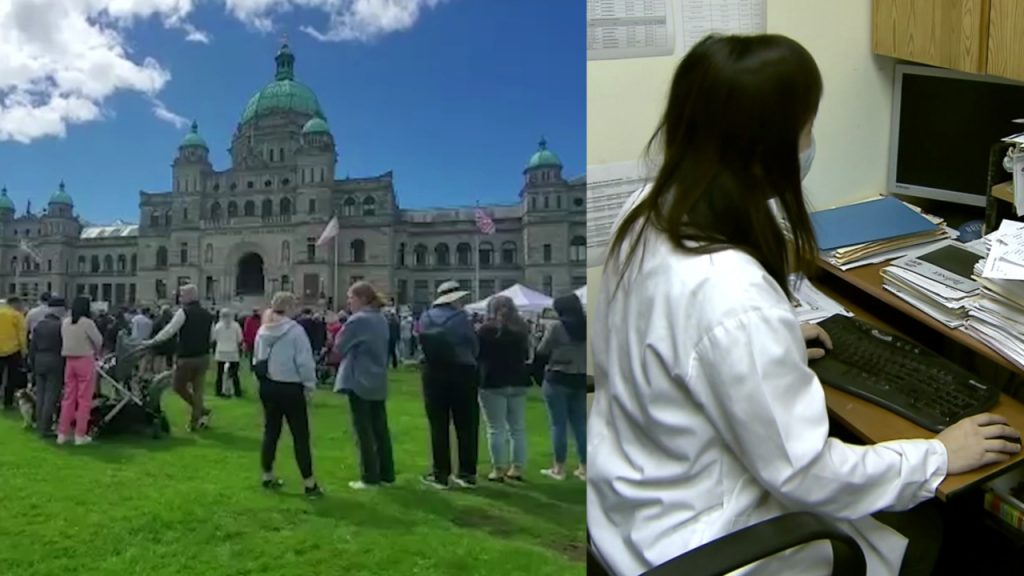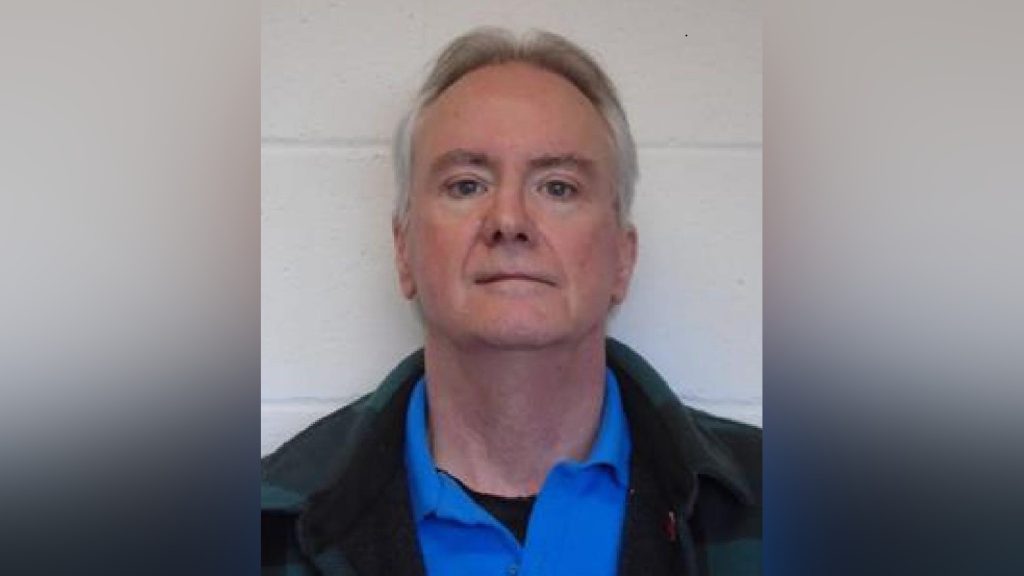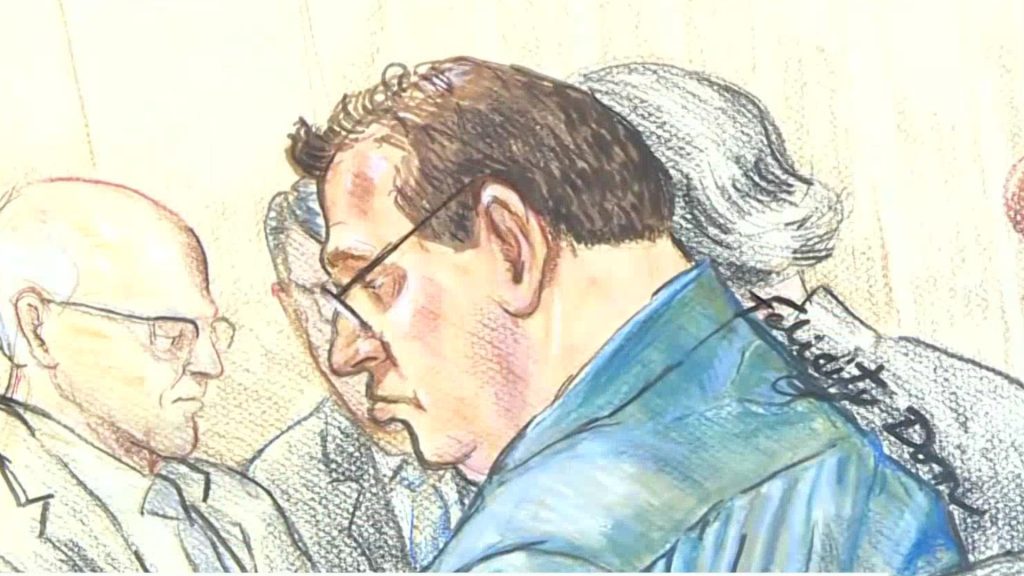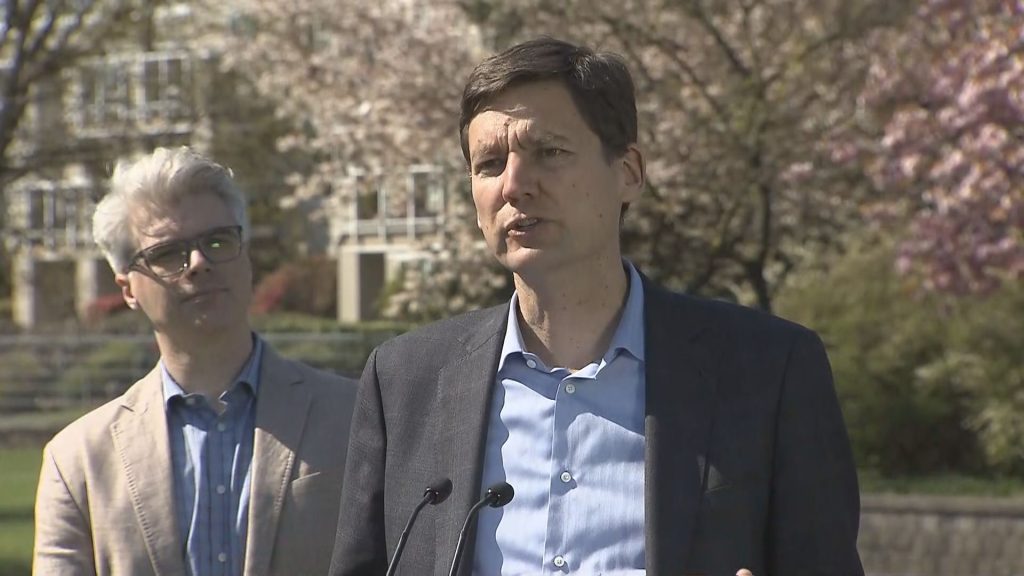‘Heaviest crisis in primary care’: Victoria rally calls for better access to family doctors

Posted May 19, 2022 7:33 am.
Last Updated May 19, 2022 8:55 pm.
The chronic shortage of family doctors in B.C. came to a head Thursday as a crowd gathered at the Legislature in Victoria to demand better access to primary care from senior levels of government.
The situation right now in this province is dire. There are about 1-million British Columbians who still don’t have access to a family physician. Dr. Ramneek Dosanjh, president of Doctors of BC, says that’s not good enough.
“We are a first-world country, and we need to be able to deliver healthcare that’s reflective of that. We really are advocating as true patient partners. This healthcare reform involves all of us and it’s time that we collaborate at a pace that can really give some true access and attachment to all of our patients.”
She understands people are growing increasingly frustrated with the lack of available help on the frontlines.
“I respect the fact that they have been disheartened by this process, but I also promise to them that we are the same physicians that were on the ground to help us get through an opioid crisis, which we are still trying to navigate, as well as the pandemic. I want to instill hope and optimism with our patients that we are fearlessly committed to our patients, and they come first, and our advocacy runs really deep and through this organization. We’ve seen tough times and we will not let our patients down.”
This rally comes two days after the organization met with the province, which she calls a “robust discussion” but admits there’s still a lot of work to do.
“I think we are definitely in the heaviest crisis we’ve seen in primary care, and I made it very clear on [Tuesday] with Premier John Horgan and Health Minister Adrian Dix, that’s why there was a sense of urgency to meet with them, to try and collaborate and create an urgent solution.”
Related Articles:
-
B.C. premier meets with doctors to talk staffing, strain on health care
-
B.C.’s family doctor shortage exacerbated by pandemic exhaustion, cost of living
-
B.C. Green party leader says backbone of the healthcare system is nearing collapse
-
Lengthy health care wait times caused by lack of family doctors, expert says
The number of family doctors that are helping people full-time right now is not able to keep up with demand, according to Dosanjh.
“What we know is we’ve got a number… roughly 3,200 family physicians that are now providing longitudinal care, which is full-service family medicine, in their clinics. We also know that we’ve got well over 6,000 physicians that are trained as family medicine and are not doing family medicine clinical work.”
She adds one of the solutions to easing the burden on doctors is to move to so-called team-based care.
“What we really need to do is really create an opportunity to bring as many physicians that we have in the province as well as looking to our residents and recruitment and retention strategies, as well as our international medical graduates, as well as our allied healthcare professional, like our nurse practitioners, nurses, and pharmacists into our practice, to be able to manage team-based care and patient care delivery in a different way.
“What we truly need immediately is critical infrastructure to support the care of family doctors in their clinic settings, so, if we can actually even address the overhead payment to these clinics to allow doctors to doctor and not have to manage the utilities to keep the lights on.”
Related Video:
Dosanjh insists the reason many of the doctors who are no longer providing care is because they’re struggling to keep a clinic operating.
“I definitely think we have to address the increasing and rising cost of business of community doctors in order for them to even practice and we have to retain them. The other thing that I think I would ask for is an immediate alternative compensation model for people to have a modernized fee schedule to reflect the needs of our doctors and their evolution as well as the patient complexities. Most physicians I speak to want more time with their patients.”
The issue of accessing a doctor easily is a problem across the country but is especially bad in B.C., however, the province is promising to fix that.
“Going forward, the provincial government has committed to working closely with Doctors of BC on solutions, including a clear process with firm timelines in order to make tangible progress on this complex problem. Throughout the COVID-19 pandemic, the role of family physicians was important and adaptable to the conditions as they moved from 62,000 visits by telehealth or virtual health in 2019 to 13.9 million visits during the pandemic. The number of British Columbians without access to an in-person family physician is a real problem. They are left waiting hours for medical attention that, for many, could have been addressed with a visit to a family doctor,” says a statement from the premier’s office.










